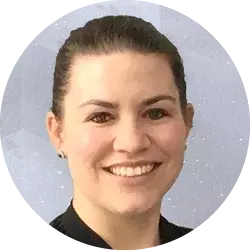Oracle expert Günther Stürner in interview with Andreas Gaede, CEO PITSS GmbH
Oracle Forms, APEX, PITSS.CON, the three musketeers!
Andreas Gaede is one of the founders and today the sole CEO/GF of PITSS GmbH, which has its headquarters in Stuttgart, Germany. Further locations are Paderborn, Germany, Henly-on-Thames, UK and Troy, USA. PITSS is one of the leading software houses specializing in analyzing and modernizing Oracle Forms and Oracle Reports systems. Its products and services are offered worldwide.

POPULAR POSTS
Modernization
Why and how to modernize legacy applications efficiently
Read more
Sponsorship project
PITSS is awarded a BMBF funding project for digital software documentation
Read more
Reference
Hrc is focusing on speed and security when maintaining its banking software with the PITSS Application Data Cube
Read more
Andreas Gaede: If you consider a typical Swabian medium-sized company to be highly innovative and reliable, offers great products, first-class service and completes even difficult projects on time and budget, then I would be honored to be portrayed as such.
But yes, we are on the road worldwide with our software and carry out projects wherever customers use Oracle Forms applications that either need to be improved in terms of quality or, as is currently increasingly in demand, where customers want or need to migrate their outdated Oracle Forms applications to Oracle APEX.
Andreas Gaede: PITSS was founded in 1999 as a service provider in the areas of ERP development and implementation, such as the Oracle E-Business Suite EBS and as an experienced Oracle specialist. The aim has always been to offer professional IT solutions in the form of software products and services, PITSS for short.
It was also the time for many Oracle Forms customers to modernize their server-side, character-based applications towards client technology with Forms 4.5, 5, or even 6. For this reason, many companies turned to us for help in upgrading their legacy business applications to the latest Forms release.
Andreas Gaede: Oh yes, it wasn’t easy. It wasn’t just a software upgrade that was imported and then everything was done. The step from character-oriented to GU-oriented and later from client-server to a three-tier architecture were complex challenges that pushed some CIOs and their teams to their limits.
However, the production engineer and passionate computer scientist in me were reluctant to have this task carried out manually for each customer by many IT specialists in a laborious yet error-prone manner. This is how our mission is to develop intelligent products such as PITSS.CON, which can load and understand enormous amounts of data in the form of program code, procedures, functions, and even database tables, not just for one, but for many different, industry-specific applications as metadata, was born early on.
Günther: So that was the idea of using software to analyze other software?
Andreas Gaede: Yes, exactly. Even with our first product, which we completed in 2001, we performed a comprehensive, machine-supported analysis before almost every action. Analysis was the magic word. Analyzing and understanding the systems was and is an important basic principle of our approach.
The analytically prepared data could be changed at will, maintained in a cost-conscious manner and to the latest versions. In this way, we deliberately went against the usual, lucrative IT service model, which aims to keep as many resources with customers for as long as possible.
Certainly one reason why we have been able to successfully install our products and complete projects in over 40 countries.
Andreas Gaede: In principle, the sequence is relatively simple. As a minimum, a customer provides us with the Forms .fmb file, which is the source code of a Forms application. In the best case scenario, they provide us with their entire application, namely all program sources, i.e. .fmb for Forms, .pll and .olb as libraries, .rdf for reports, .sql for all accompanying SQL programs through to ASCII files such as ProC and a structure dump of the database. Important you do not deliver any data, these files are broken down by our PITSS.CON parser into their components and these are stored in our PITSS.CON data cube, within an Oracle database. It is still the same application. However, we have changed the ‘aggregate state’. The entire Forms application is now in a state that allows it to be analyzed according to all the rules of the art of SQL. Mind you, we don’t need any customer data for this exercise and we don’t change the application in any way during this phase.
Andreas Gaede: As mentioned, the customer has the opportunity to evaluate and assess their application according to all the rules of the art. We provide a large number of predefined analyses and evaluations. They receive detailed documentation of their application and a list of weak points, some of which can be eliminated in the next step with a high degree of automation. The result would then be a completely overhauled, improved, streamlined new version of the previous Forms or Reports application.
Andreas Gaede: Yes, this information is difficult to obtain without the use of PITSS.CON, is very cumbersome and usually not complete. Once has been broken down and loaded into the data cube, the forms system can be examined from different angles. In our view, this makes our product a quality improvement tool, provided it is used permanently. You can even go so far as to say that there should be no more changes without these changes being quality-checked in advance with the help of PITSS.CON. Even after changes have been made, PITSS.CON can be used for optimal test support. In this case, the changes in the process can be shown in such a way that targeted and time-saving testing of the application is possible. However, it is of course up to the customer to decide how to handle this in practice.
Andreas Gaede: For example, it needs to be clarified where a change in an application or the data structure has an impact everywhere. In a larger system, this very quickly leads to many places that need to be adapted accordingly. Providing this type of information is a trivial task within PITSS.CON. Without such assistance, it is a challenge to say the least. This eliminates many sources of error and significantly improves the quality of the system.
Andreas Gaede: Yes, but this is only one side of the coin. Once a Forms or Reports application has been broken down into its components, analyzed, and possibly modified, it is possible to generate a software system from this data again, provided that the appropriate rules are in place. Decomposing a Forms application is therefore not a one-way street. Regenerating it back into a Forms application after a clean-up or renovation is just as possible as generating it for another platform.
This is exactly the idea we pursue when migrating from Oracle Forms to Oracle APEX or Oracle Reports to Jasper.
Andreas Gaede: The ‘press the button’ is correct if you want to generate a Forms or Report program from a cleansed Forms or Reports database.
When migrating to APEX or Jasper, it’s not quite so easy. Although we are very good at implementation and we are getting better and better from version to version, it is not possible to completely convert a Forms application to APEX and it does not always make sense to create native APEX code to ensure optimum maintainability afterward. This is particularly the case in the front-end area, as the number of options is many times greater with APEX than with Oracle Forms. In this area, manual intervention is necessary and desired by us, as it usually is by the customer.
Despite good software support, migration projects, especially those involving large systems, cannot be successful without a stringent process model and first-class project management. This is our second core competence: project control and project management. A high degree of automation through our PITSS.CON toolset and good project management are the key to successful projects. Our customers particularly appreciate the fact that our calculated project durations are very precise. This is also the reason why we can also offer and carry out such projects as fixed-price projects.
Andreas Gaede: Oracle Forms is a great product, but it’s getting on in years. Graying with age, you could say. Just like the majority of Forms developers. In plain language, this means that many new technologies, especially in the front-end area, cannot be used or can only be used in a rudimentary way. Visually, Forms applications often look like ‘yesterday’s news’. The use of applications on different devices is also rather difficult. You will search in vain for a Forms app on a smartphone or an iPad.
Oracle APEX as the new target platform for migration is in a completely different league. The development concept is similar to Oracle Forms, which simplifies migration. However, APEX is state of the art in terms of front-end technology and the result is state-of-the-art systems that can run on all devices.
The second reason why Forms customers are considering migration is the declining number of Forms experts. Some companies are afraid that one day they will be left without development support. Here, too, we find exactly the opposite trend in the APEX world. The APEX developer community is huge and still growing rapidly. From our point of view, APEX is the ideal future platform for Oracle Forms applications. There is also no question within Oracle: APEX is the future.
Andreas Gaede: Completely redeveloping an application package is of course always an option. It is always an option when the existing system, processes and workflows have to be opposed to the current Forms system. For whatever reason.
In most cases that we know of, however, this is not the case. Here, the minimally invasive procedure of migration is the better way. What is still good is used instead of reinvented. Here the data model and the countless PL/SQL procedures and functions should be mentioned in particular, which can usually be adopted. Reuse of well-tested code wherever possible, instead of a green field. Another interesting point for our customers is the possibility of successive migration during operation. Individual modules that are logically related or related in the business context, such as warehouse programs, are migrated, made available to end users, and quickly put into operation, while other modules continue to run with Forms technology until it is their turn to be converted. This also makes time-consuming and cost-intensive prototypes that are never used obsolete and replaces them with new, quickly productive sub-applications that lead to an early and enthusiastic buy-in from the responsible stakeholders.
From a cost perspective and in terms of risk minimization, it makes a huge difference whether you plan and implement a completely new development or aim for a migration. With a clear advantage for the migration.
Andreas Gaede: We are both. A software company that develops an innovative software package – PITSS.CON – and sells it to customers. However, we are also a consulting company that carries out migration projects as well as other projects in the area of forms, reports, or APEX. If a migration customer is already using PITSS.CON, we also use this license for the migration project. Otherwise, we make PITSS.CON is available for the duration of the project. We therefore use our own product intensively in our customer projects. Some say that you can see that in the product. In a positive sense. A migration project without PITSS.CON is not an option that we offer.
Andreas Gaede: In addition to our customers who use PITSS.CON, we ourselves are a major PITSS.CON user in many of our consulting projects. This always results in new requirements that are incorporated into the new versions of our product. The new releases of our target systems such as APEX or Jasper must also be reflected in our new versions. We have already released two new versions this year. It’s all very dynamic.
The BMBF (Federal Ministry of Education and Research of Germany) has also recognized that we are very innovative in the field of software product analysis.
In 2021, we won our first funding project, which dealt with the identification of business processes in existing, self-developed applications. This funding project added another extremely powerful module to our PITSS.CON product suite, which has been marketed as ProFind since 2023. With ProFind, the processes implemented and operated by specialist departments come to the fore when optimizing and modernizing applications. Legacy issues, such as functions that are no longer used or poor or overloaded programming, are filtered out, leaving the focus on what is needed.
The second, currently ongoing funding project is concerned with autonomous or semi-autonomous adaptations or autonomous reactions of an application. Very exciting.
The funding projects as well as other internal PITSS developments driven by market requirements and technical possibilities have led us to a more fluid patch process for our products. Partial solutions are removed from development projects at an early stage and integrated into the primarily cloud-based products after testing. This allows our customers and projects to benefit quickly from new innovations.
We will continue to pursue this level of innovation and our status as a thought leader in the field of application modernization.
Thank you, Mr. Gaede, for your time and all the best for your team.
Further information:
PITSS Corporate Communications
Cathrin Cambensi
ccambensi@pitss.com
 | Your contactUta Daniels |

